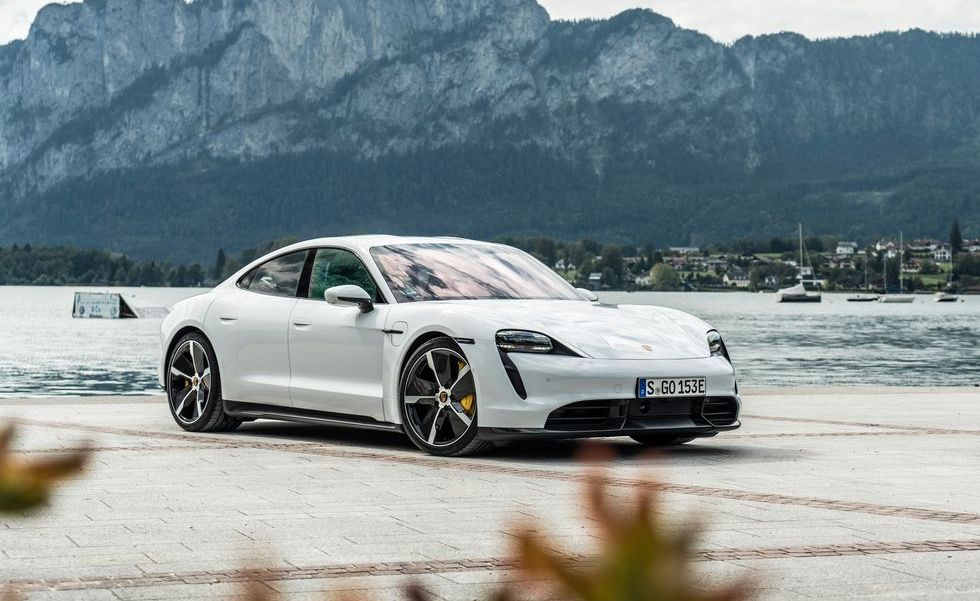EVs Fall Short of EPA Estimates by a Much Larger Margin Than Gas Cars in Our Real-World Highway Testing

SAE International has just published a paper co-authored by Car and Driver’s testing director, Dave VanderWerp, showing that, in our testing, EVs are far worse at matching EPA estimates than gas-powered vehicles.The paper compares EPA fuel-economy and range estimates to the results of C/D’s real-world highway tests, with EVs failing to meet the EPA’s range figures on average.The authors propose solutions like more standardized testing procedures and the inclusion of both city and highway range figures on new vehicles’ Monroney price stickers.
A new paper published by SAE International uses Car and Driver’s real-world highway test data to show that electric vehicles underperform on real-world efficiency and range relative to the EPA figures by a much greater margin than internal-combustion vehicles. While the latter typically meet or exceed the EPA-estimated highway fuel economy numbers, EVs tend to fall considerably short of the range number on the window sticker. The paper, written by Car and Driver’s testing director, Dave VanderWerp, and Gregory Pannone, was presented this week at SAE International’s annual WCX conference. It points to a need for revised testing and labeling standards for EVs moving forward.
“Basically we’ve taken a look at how vehicles perform relative to the values on the window sticker, looking at the difference between what the label says and what we actually see in our real-world highway test,” explained VanderWerp. “We see a big difference in that gap between gas-powered vehicles and the performance of EVs. The real question is: When first-time customers are buying EVs, are they going to be pleasantly surprised or disappointed by the range?”
On Car and Driver’s 75-mph highway test, more than 350 internal-combustion vehicles averaged 4.0 percent better fuel economy than what was stated on their labels. But the average range for an EV was 12.5 percent worse than the price sticker numbers.
Lucid Motors
One reason the paper suggests for why EVs fail to match expectations is how the range is calculated. While separate city and highway range figures are computed behind closed doors, only a combined number is presented to consumers. The combined rating is weighted 55 percent in favor of the city figure, where EVs typically perform better. This inflates the range estimates, making it harder to match in real-world highway driving. The paper proposes publishing both city and highway range figures—as with fuel-economy estimates for gas-powered vehicles—to give shoppers a more holistic sense of a vehicle’s abilities.
The way the tests are conducted also skews the reported range figure. Unlike Car and Driver’s real-world test—carried out at a constant 75 mph—the EPA’s cycle is variable, with the speed increasing and decreasing over the course of the test. While this is detrimental to the results for gas vehicles, which tend to be most efficient at a steady rpm, the ability to regenerate energy under braking leads to higher range results for EVs, which are shifted even higher by the slight bias towards the city results in the combined rating.
The EPA’s highway cycle is conducted at significantly lower speeds than Car and Driver’s 75-mph test, with the initial EPA results then multiplied by a reduction factor to simulate the effect of higher speeds. Automakers can chose between running a two-cycle test—where the data is multiplied by a standard 0.7 adjustment factor—or carrying out a five-cycle test in an attempt to earn a smaller reduction factor, making the label figure higher. That means range figures aren’t perfectly comparable across different vehicles.

Porsche
“There’s a balance,” explained VanderWerp. “The marketing team wants to tout a big range number, but to customers you want to be conservative.” This leads to different approaches from various brands. The German automakers—BMW, Mercedes, Audi, and Porsche—typically provide a relatively conservative range figure, allowing us to meet or even at times exceed the range numbers in Car and Driver’s real-world tests. Tesla, meanwhile, pursues an impressive figure for its window stickers, and ends up returning real-world results that are on average two times as far off the label value as most EVs. A range discrepancy between EVs from different companies might not be as extreme as the numbers would suggest. “400 miles of stated range for a Tesla and 300 miles for a Porsche is pretty much the same number at real highway speeds,” VanderWerp said.
The paper recommends that the EPA shift the reduction factor closer to 0.6, which would result in range estimates that closely correlate with the results of the real-world efficiency test. But having the same test procedure for all cars is also crucial.
“Every automaker could aggressively use the five-cycle test and get a better reduction factor, but then more people end up being disappointed in the numbers,” VanderWerp said. “They should all be tested the same, and it should be closer to the real world than it is now.” The paper can be found in full at SAE’s website.


Associate News Editor
Caleb Miller began blogging about cars at 13 years old, and he realized his dream of writing for a car magazine after graduating from Carnegie Mellon University and joining the Car and Driver team. He loves quirky and obscure autos, aiming to one day own something bizarre like a Nissan S-Cargo, and is an avid motorsports fan.







